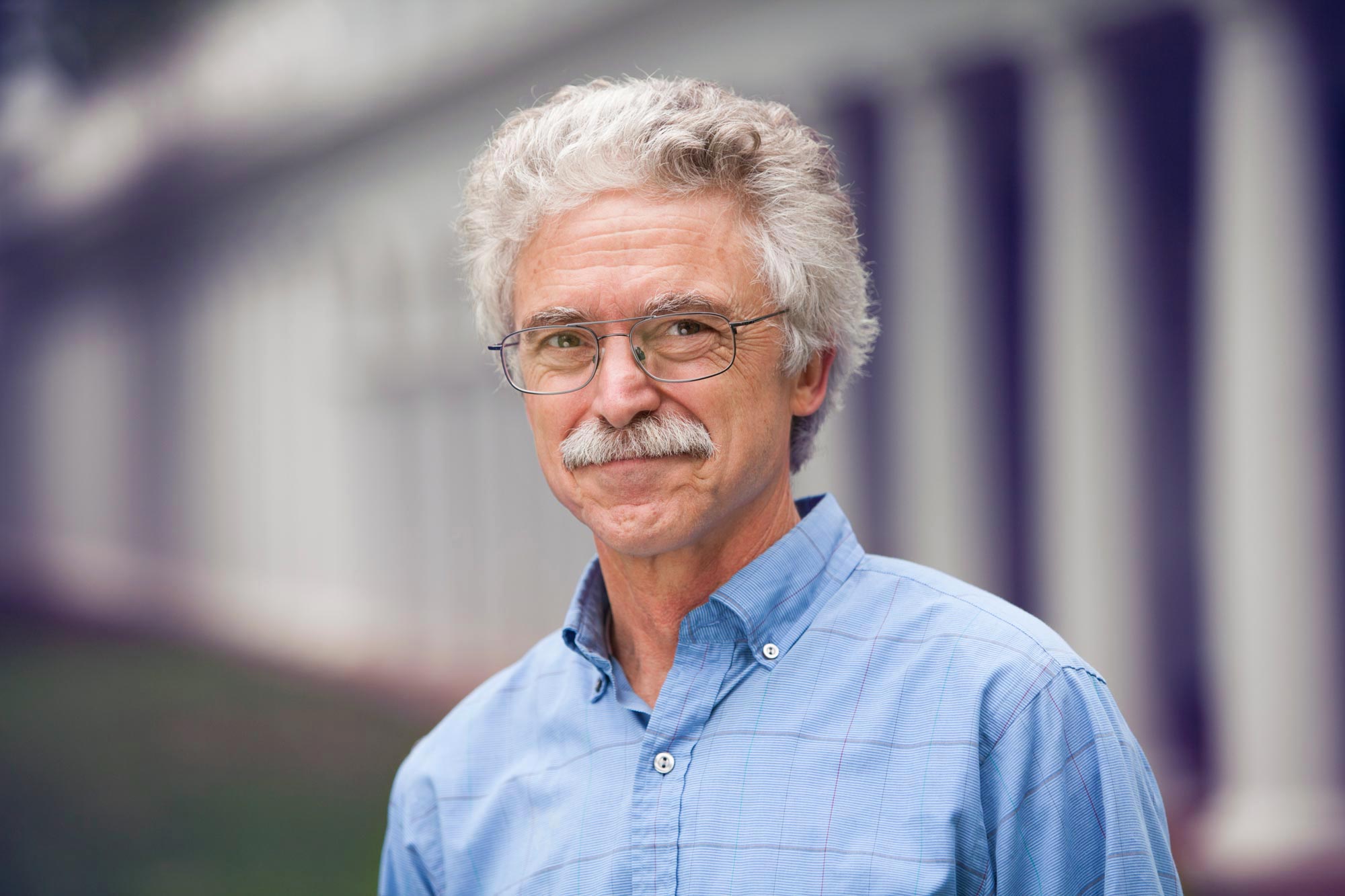With help from the University of Virginia’s Weldon Cooper Center for Public Service, the Commonwealth of Virginia is taking its first steps in a new plan to reduce carbon emissions across the state. Under Executive Directive 11 issued May 16, Virginia Gov. Terry McAuliffe ordered the establishment of a new “trade-ready” cap on electricity sector emissions.
The Cooper Center, with funds from UVA’s Bankard Fund for Political Economy, will hold a public workshop in Richmond on Wednesday to discuss ways that the commonwealth can effectively establish such a cap and how any new cap program might work with the Regional Greenhouse Gas Initiative, a cooperative of nine northeastern states using a market-based program to reduce greenhouse gas emissions. Virginia is not currently a member but is considering joining.
UVA Today sat down with the Cooper Center’s William Shobe to learn more about what constitutes a “trade-ready” cap on emissions and how it might help Virginia reduce its carbon footprint. Shobe is the director of the Center for Economic and Policy Studies at the Cooper Center and the host of Wednesday’s conference.

William Shobe is the director of the Center for Economic and Policy Studies at the Cooper Center and a professor of public policy at the Frank Batten School of Leadership and Public Policy. (Photo by Dan Addison, University Communications)
Q. What does it mean to put a “trade-ready” cap on emissions?
A. The idea is that instead of telling each power plant what rate of emissions it can have, you say, “The state itself is going to be under a cap on its emissions.” Then we have some mechanism – usually a market mechanism of trading – to decide how the cap gets used. So you put yourself under a total cap on the tons of CO2 emissions per year.
Under that cap, there is a fixed number of allowances for carbon emissions. As an example, let’s say the cap is 1,000,000 tons of carbon emissions and the state designates that 500,000 of those will be used as the cap on electricity sector carbon emissions. This means that there are then 500,000 carbon allowances available for power firms.
Then there has to be some decision about how to take these allowances and get them in the hands of those firms. There are a few ways to do that. You can give them to firms or you can sell them, or some combination of those. The states in the Regional Greenhouse Gas Initiative use an auction to sell their allowances to power firms.
“Trade ready” has two implications: trade within the state or possible trade with other states. So we put ourselves under an allowance cap, now the question is, “How are power firms going to comply?” If they can only use the cap within Virginia, then there will only be trading among Virginia power firms who need more carbon allowances or have extra allowances to sell. The other option is to open up trading with firms in other states. Ideally we would do that with the Regional Greenhouse Gas Initiative, and having more trading partners would help lower the costs of allowances for everyone and make the overall emissions cap more easily attainable.
Q. How does Virginia’s relationship with its utilities impact how allowances would be given out?
A. We have a regulated utility system, which is different from other states in the Regional Greenhouse Gas Initiative. Virginia power firms like Dominion and Appalachian Power are regulated monopolies. That means that the state government has a hand in capping their rates, but it also means that they have the right to pass on new additional costs to the consumer. So for a “trade-ready” cap program, it may be in Virginia’s favor to give away a set amount of allowances for free because auctioning them off initially could drive up the cost and that expense would get passed on to consumers.
Firms could then choose to keep the allowances they need and use the regional auction to sell any allowances they don’t or to buy any additional allowances if they don’t have enough to cover their emissions. One of the key elements of the system that we will be discussing at the workshop is how to ensure that any savings the firms gain through this system is passed onto rate payers and not just shareholders.
Q. What will this first workshop do to help launch the emissions program?
A. The issue at this workshop is not Virginia’s cap itself, but rather asking, “What would Virginia need to do to link a program to the already existing, successful Regional Greenhouse Gas Initiative?”
The initiative has a schedule of reductions that is already published and it is considering making adjustments to those reductions. Right now, the group has set their reduction rate at 2.5 percent per year. It turned out to be much cheaper than everyone expected to lower their emissions and they’re considering increasing the rate at which emissions go down even further.

Virginia will not be part of those discussions but what it will be negotiating with the initiative is about how fast our cap has to go down to be consistent with what they’ve chosen to do. Virginia’s CO2 emissions have already gone down quite a lot, so if we were to join the initiative, there would be negotiations over what reductions we’d get credit for and how much we’d have to reduce our emissions to be at the same stringency level as the rest of the member states.
Part of the workshop will cover modeling done for the Cooper Center by a natural resources think tank, Resources for the Future, to estimate the likely outcomes of linking Virginia’s cap to the initiative’s goals.
Q. What are the next steps after this meeting?
A. This meeting is purely informative. The Weldon Cooper Center is there to lend modeling and technical policy expertise to the discussion.
The final emission policy will be made through the Department of Environmental Quality’s technical advisory committee who are going to come to some agreement about what to suggest for a path forward. From there the Cooper Center will continue contributing its own neutral voice to assist in the regulation proposal process several months from now.
Media Contact
Article Information
July 10, 2017
/content/cooper-center-helps-state-officials-shape-new-plan-reduce-co2-emissions

